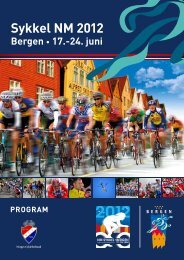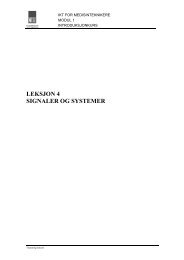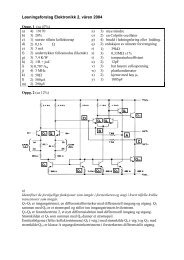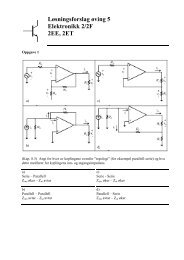The Online World resources handbook
The Online World resources handbook
The Online World resources handbook
You also want an ePaper? Increase the reach of your titles
YUMPU automatically turns print PDFs into web optimized ePapers that Google loves.
Gazing into the future http://home.eunet.no/~presno/bok/17.html<br />
listserv@auvm.american.edu. Use the command Sub DEVEL L .<br />
<strong>The</strong> American Radio Relay League (AARL) operates an Internet information<br />
service called the ARRL Information Server. For information, send email to<br />
info@arrl.org with the word HELP in the the text.<br />
<strong>The</strong> WWW server for Amateur Radio will give you easy access to the Frequently<br />
Asked Questions and more. <strong>The</strong>re's another one at http://buarc.bradley.edu/.<br />
Cable TV<br />
Cable TV networks increasingly offer gateways into the Internet and other online<br />
services. One possible next step is for the cable TV networks to be interconnected not<br />
unlike the Internet itself. We'll see.<br />
Example: Continental Cablevision Inc. (U.S.A.) lets customers plug PCs and a<br />
special modem directly into its cable lines to link up with the Internet. <strong>The</strong> cable link<br />
bypasses local phone hookups and provides the capability to download whole books and<br />
other information at speeds up to 10 million bits per second.<br />
See http://www.teleport.com/~samc/cable1.html for more about Cable TV<br />
communications, try<br />
<strong>The</strong> next generation dial up modem<br />
New technologies with names like ADSL (Asymmetric Digital Subscriber Line), VDSL<br />
(Very High Digital Subscriber Line), and HDSL, have quietly been sneaking up from<br />
behind. <strong>The</strong>se modems can transmit data at speeds from 176 kbits/s to 52 Mbits/s,<br />
depending on line length.<br />
ASDL modems are connected to ordinary copper phone lines (2 wired), and will<br />
typically enable users to receive information at 6 mbits/s and up depending on the<br />
distance from the telephone exchange. Usually, they can only send at 176 to 640 kbits/s.<br />
This is enough for many applications, including video on demand.<br />
See http://www.adsl.com/ for background information, and supplement with a<br />
quick search using Alta Vista in Chapter 10.<br />
Satellite communications<br />
Hughes Network Systems (USA) markets DirecPC, a small satellite dish that picks up<br />
digital signals from the air on personal computers. Users can get news, sports, and stock<br />
information as part of a "basic access" content package. <strong>The</strong> basic service also includes<br />
a "Turbo Internet" application so subscribers can receive megabytes of Internet<br />
documents at high speeds of up to 24 Mbps.<br />
Globalstar is a wholesale provider of mobile and fixed satellite based telephony<br />
services for voice calls, Short Messaging Service (SMS), roaming, positioning, fax, and<br />
data communications via 48 low earth orbiting (LEO) satellites. As a wholesaler,<br />
Globalstar sells access to its system to regional and local telecom service providers<br />
around the world. It is due to start operations in the year 2000.<br />
Iridium went broke, and was reborn. In 2001, they offered data communications at<br />
a whapping 2,400 bps. Upgrade pacages promising 10 Kbps are on the horizon...<br />
Teledesic Corp. plans a network of 840 low earth orbit (LEO) satellites covering<br />
95 percent of the earth's surface by the year 2002. <strong>The</strong> idea is that we will have access<br />
to information from almost anywhere. With a small bit of hardware, By 2005, Teledesic<br />
will let you communicate at 16 Kbps duplex anywhere on the globe. With slightly bigger<br />
equipment, up to 2 Mbps.<br />
Bill Gates has invested heavily in Teledesic, so there might eventually be a<br />
Microsoft involvement.<br />
A consortium lead by Sky Station (USA) plans an international transmission system of<br />
balloons just 21 km over earth. In the year 2000, they will offer wireless, 1.5Mbps T1<br />
4 of 8 23.11.2009 15:49

















